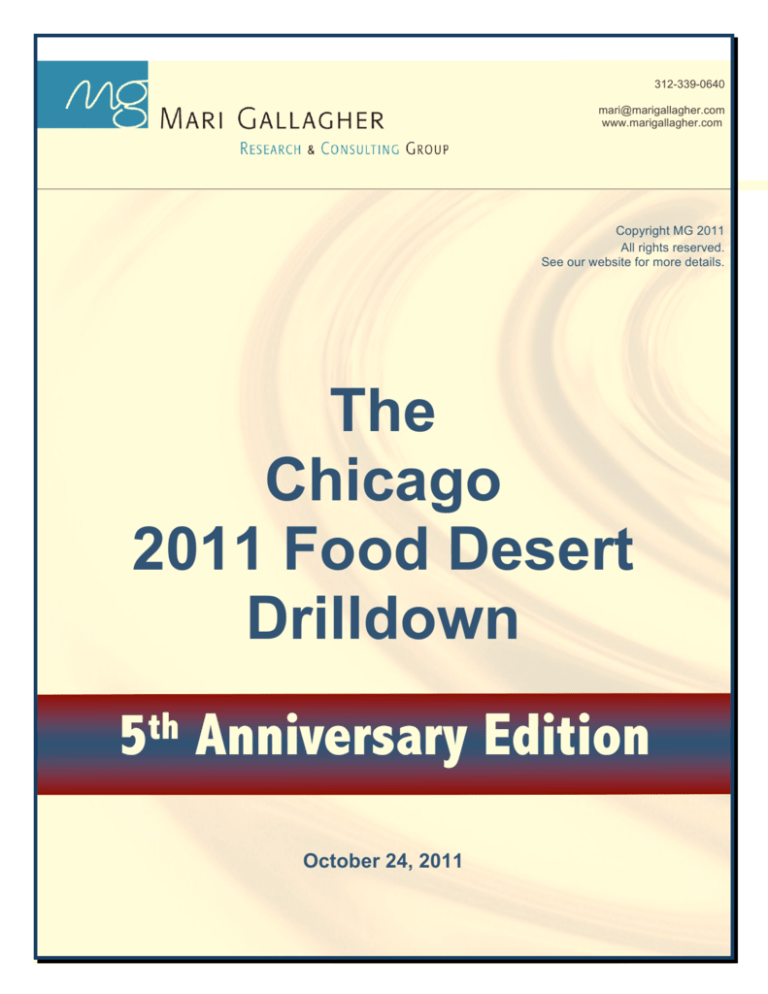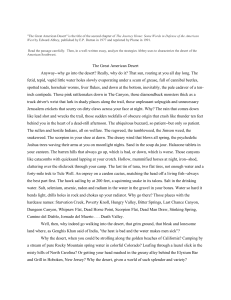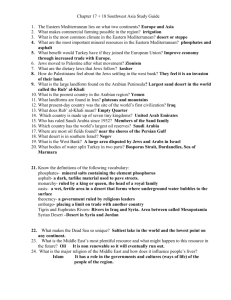
312-339-0640
mari@marigallagher.com
www.marigallagher.com
Copyright MG 2011
All rights reserved.
See our website for more details.
The
Chicago
2011 Food Desert
Drilldown
5th Anniversary Edition
October 24, 2011
The Chicago Food Desert Progress Report
October 2011
Copyright MG 2011
As shown in the detailed tables provided in this
report, progress has been made toward shrinking
Chicago’s Food Desert. Over the last five years, its
population was reduced by nearly 40%. Many
deserve thanks and congratulations!
But the work is not done yet. Our problem remains
significant, as 383,954 Chicagoans still live in a
Food Desert, compounding the impact on health
outcomes and quality of life over time for those
residents. The current Food Desert population could
fill U.S. Cellular Field to capacity ten times over.
Many who suffer are children.
In fact, the total number of children in the Food
Desert today could fill to capacity 2,484 school
buses. That’s a lot of children – roughly the
population of Naperville, Illinois. And it’s a lot of
school buses, too! If all of these busses lined up
bumper-to-bumper, they would stretch from
President Obama’s Chicago house in Hyde Park, to
City Hall on LaSalle Street, and, from there, to
Mayor Rahm Emanuel’s house – a total distance of
about 17 miles. It is unrealistic to think that busy
parents can regularly travel 2 or 3 times out of their
neighborhoods each week in order to reach
healthful food. By the way – as our new analysis
reveals – approximately 40,000 Food Desert
households do not own cars. We can preach “eat
your vegetables” but let’s get real: public
transportation and Zip Cars are not always a viable
option. Even families with cars often have neither
time nor gas money to travel long distances to
grocery shop.
The Drilldown provides never-before-released
tables detailing the Food Desert population, as well
as maps featuring community names, street
identifiers, and aldermanic ward numbers.
We hope that this information is useful in helping a
wide range of market, government, policy, and
community actors to prioritize resources and to
continue their fight against Food Desert conditions.
Because – unless the Food Desert is eliminated –
we predict continued premature death and suffering
from diabetes, hypertension, cardiovascular
disease, and certain kinds of cancer. Access to
mainstream food does not completely solve the
nutritional problem, but it is the required first step.
Let’s keep moving!
2
Message from Mari Gallagher
I write this message from a position of deep
gratitude. Thank you to everyone who has worked
to bring healthful, affordable food to underserved
areas of Chicago. Some of you are developing
new mainstream stores. Others are helping corner
stores to improve their offerings. Just last week, I
visited Growing Home’s urban farm dedication in
Chicago’s Englewood community. It is the first
urban farm established under the historic passage
of the City of Chicago's new urban agriculture
ordinance. Many good things are in the works: a
city bus converted into a traveling grocery store,
and a three-dollar “best of the season” ten-piece
fruit offering, sold through local community
networks, providing competition with Happy
Meals. Wow!
There is no single problem or solution to Food
Deserts. This is good news. It means everyone
can do something. We’re talking about you! And
we need you, because the work is not yet done.
Many of you have been working on some aspect
of good food and community health for decades. It
is motivating to see you shine in your areas of
talent and accomplishment.
In 2006, our report, Examining the Impact of Food
Deserts on Public Health in Chicago popularized
the term Food Desert nationally and encouraged
Congressman Bobby Rush to enter Food Desert
language and measures into the Farm Bill. Shortly
thereafter, we helped establish September as
National Food Desert Awareness Month. In our
first campaign, with the participation of former
Chicago Health Commissioner Dr. Terry Mason,
we distributed 1,000 Pink Pearl Apples in
Chicago’s Roseland community – compliments of
Goodness Greenness. But as we marked the fifth
year anniversary of our original report’s release,
we realized that it was time to retire the Food
Desert awareness campaign. We feel the
awareness war has been won, as evidenced by
this week’s arrival of our nation’s First Lady who is
touring the Chicago Food Desert herself and
meeting with community leaders about advancing
solutions.
Continued, next page…
The Chicago Food Desert Progress Report
October 2011
Copyright MG 2011
3
Message continued…
We will continue to work on the issue of Food Deserts in Chicago, as well as across the country. We now wish to
turn attention to two key steps that will more effectively and readily combat Food Deserts.
First, the Food Desert “elimination” date in Chicago should be 2015, not 2020.
In March of this year, we recommended at a City Council Committee Hearing that a date – 2014 – be targeted to
eliminate Chicago’s Food Desert entirely. We received pushback later from top city staff, but not long after taking
office, Mayor Rahm Emanuel himself targeted 2015 as the year by which to reduce the Food Desert by 200,000
people and 2020 to eliminate it. We thank the Mayor for these bold targets and for the work he and so many
others are doing to improve food access in disadvantaged neighborhoods. However, after developing this recent
analysis, we believe it can be done sooner. We suggest that the new target for eliminating Chicago’s Food Desert
completely be 2015. We ask that the Mayor embrace this target and that all of you do, too – let’s move! There is a
lot of momentum to build on now in addressing the issue, and while some grocers have recently moved out of the
Food Desert, many more are moving in or upgrading their offerings. We are in the home stretch. It can be done if
we act strategically. If you need motivation, think of 17 miles of bumper-to-bumper school busses packed with
children. This is the number of Chicago children – over 124,000 – who are still stranded in the Food Desert.
In early 2012, we will release an update of the Chicago Food Desert reflecting changes since this
analysis. While our drilldown tables and maps are new, the store data in this report are from June 2011, meaning
that by early next year our update will reflect the last six months of changes in Chicago. Additionally, we will draw
the updated Food Desert by Census block instead of by tract, which is how we now conduct the analysis in every
other location where we do this work. This will help attack the issue with greater precision and allow us to exclude
ALL areas without a minimum threshold of residential population. Last, the analysis will include a calculation of
the fewest number of new improvements that it would take to eliminate the Food Desert. We hope this blueprint
will be helpful and we pledge to repeat this analysis every 6 months until the Chicago Food Desert is
eliminated entirely. We’re asking everyone to step up their efforts and we’re willing to do the same, too.
Second, we must enforce the current rules of SNAP and raise SNAP standards in the next Farm Bill.
The USDA Supplemental Nutrition Assistance Program (SNAP) is a vital program. We wish to be clear that we
support SNAP. Some of our closest and most helpful colleagues work for some aspect of the program directly,
and others work indirectly out in communities, leveraging SNAP resources in a way that is truly improving the
lives of thousands of vulnerable families across our city and many more across our nation. However, over the last
several years, we have documented two urgent problems with the current state of (SNAP): 1) standards are too
low and 2) many retailers are not in compliance with even those low standards.
It is not just a Chicago problem. It’s a national problem. For example, we conducted a block-level study in five
Michigan counties that include the city of Detroit and found that the presence of USDA fringe retailers has a
statistically significant link to more diet-related death after controlling for other key factors. The “first line of
defense against malnutrition” is actually making people sicker. The study also revealed discrepancies within the
official SNAP database. The address and name of the store were usually accurate but the reported store type
was often misleading. For example, we found liquor stores coded by the USDA as medium-size grocers or
supermarkets. We also found restaurants and specialty shops authorized by SNAP that claim to sell food raw as
groceries but then fry it for free or for a surcharge and serve it as prepared food, which has historically been
against USDA regulations. We developed two categories for food retailers: mainstream and fringe. A mainstream
retailer sells food that would support a healthy diet on a regular basis. A fringe food establishment specializes in
“food alternatives” high in salt, fat, and added sugar and in non-food items such as soda, candy, donuts, canned
soup, packaged bologna, lottery tickets, tobacco, and alcohol. We found that 92% of Detroit SNAP stores are
fringe. Most are liquor stores. While this problem might be most severe in Detroit, we found similar SNAP stores
and data coding discrepancies across America. For example, just last week in Chicago, we drew a one mile
diameter circle around the new Englewood urban farm site and found that most of the retailers there are fringe.
The Chicago Food Desert Progress Report
October 2011
Copyright MG 2011
4
Message continued…
Unfortunately, now there is a third problem on the horizon: five states – Florida, Arizona, California, Rhode Island,
and Michigan – have recently started allowing fast food to petition to enter the SNAP program. This means that –
in Detroit and other places – venues such as KFC and Church’s Chicken are part of the “first line of defense
against malnutrition.” We wish to be clear that we are not against the fast food industry. Take McDonald’s, for
example. These past few months we have been doing fieldwork in Washington, DC. In some of the worst Food
Desert communities, McDonald’s is one of the few reliable places to buy a salad or ready-to-eat oatmeal. They
also have free and clean public washrooms, a rarity in the Food Desert. They have free Internet access. There
are few diners or other safe places to congregate. As a result, I stop in pretty regularly. What I often see are
seniors reading the newspaper and chatting with each other, and kids doing their homework. We need to also
recognize that fast food venues have been making improvements with their food offerings and that they are an
important source of community jobs. As we look ahead to the next five years, we envision working more closely
with the fast food industry on ways to help consumers crossover to healthier food choices that are economically
viable for everyone. So if you are a fast food executive reading this message and want to explore this path with
us, we hope to hear from you. Just don’t expect us to support the entrance of fast food restaurants into SNAP
until there is clear-cut empirical evidence that they contribute positively to the “first line of defense” against
malnutrition – because right now what we have instead is evidence that fast food restaurants generally correlate
with more premature death. Would we have a problem with fast food in SNAP if it met appropriate nutritional
standards? No. Would we help you get there? Sure.
The upcoming Farm Bill offers an opportunity to raise and enforce SNAP standards. This will meet with some
opposition.
First, retailers have powerful lobbyists that guard against increased regulation. However, industry leaders are
warming to this inevitable change.
Second, there are concerns about “big brother” dictating local purchasing. Yet all federal programs – including the
SNAP program – come with restrictions. The beverage industry will oppose higher standards and stricter
compliance measures, but what is hopeful is that it is now developing or acquiring healthier products in response
to public pressure and the threat of losing major vendor contracts with large institutions such as schools and
universities. It also recognizes growing market demand for healthful beverages.
Third, some communities have so few food options that there might be concern about eliminating even the worst
stores from SNAP. Here, carrots and sticks can encourage compliance and competition for SNAP dollars. This
will improve public health and support the revitalization of neighborhood markets.
Last, ensuring that SNAP stores are and remain in compliance can be costly. One solution might be to channel
compliance through local health departments that regularly inspect, fine, and license food stores. Perhaps these
local authorities can set some compliance parameters, tempering concerns about federal control of local
purchasing.
The White House should appoint a task leader to begin working immediately with industry, community, and other
leaders on new SNAP standards and compliance measures that support public health and will be accepted by
Congress. We think that all of you should be part of this movement, too. Look around in your own neighborhoods.
Are the SNAP stores contributing to positive community outcomes? Attention needs to be focused not only
nationally but locally, which is why we hope that this important issue is part of the discussion that the First Lady
and Mayor Emanuel have during her visit in Chicago this week. We also hope they discuss the compelling fact
that – in Chicago alone – about $880 million SNAP dollars flow through local stores. At a time when budgets are
being slashed everywhere, can we afford not ensuring that SNAP promotes 1) access to healthful food and not its
opposite 2) community health and not diet-related disease, and 3) local economic development, jobs, viable
neighborhood markets, and overall prosperity?
Let’s all move in this direction! Because we can and because we must.
DRILLDOWN BEGINS ON NEXT PAGE
The Chicago Food Desert Progress Report
October 2011
Copyright MG 2011
2006 Food Desert Conditions in Chicago
When Our Original Landmark Study Was Released
Total population
White population
African American population
Latino population
Age 0 to 18 population
Disabled adult over 20 years old
Disabled child under 18 years old
Grandparents with primary responsibility of grandchildren under 18
years old
Incomes over $50,000 per year
Incomes over $75,000 per year
Incomes over $100,000 per year
Single women with children under 18 years old
Households without an automobile
632,974
82,601
493,919
63,568
202,054
129,748
18,245
15,500
63,355
29,561
14,194
110,555
65,304
Five Years Later: 2011 Food Desert Conditions
Total population
White population
African American population
Latino population
Age 0 to 18 population
Disabled adult over 20 years old
Disabled child under 18 years old
Grandparents with primary responsibility of grandchildren under 18 years old
Incomes over $100,000 per year
Incomes over $75,000 per year
Incomes over $50,000 per year
Single women with children under 18 years old
Households without an automobile
383,954
53,970
296,041
38,190
124,228
78,154
11,186
9,308
8,757
17,926
38,279
69,266
40,431
5
The Chicago Food Desert Progress Report
October 2011
Copyright MG 2011
Over The Last Five Years: Food Desert Reduced By:
Total population
White population
African American population
Latino population
Age 0 to 18 population
Disabled adult over 20 years old
Disabled child under 18 years old
Grandparents with primary responsibility of grandchildren under 18 years old
Incomes over $100,000 per year
Incomes over $75,000 per year
Incomes over $50,000 per year
Single women with children under 18 years old
Households without an automobile
249,020
28,631
197,878
25,378
77,826
51,594
7,059
6,192
54,598
11,635
(24,085)
41,289
24,873
Five-Year Trend: Food Desert Total Population
700,000
600,000
500,000
400,000
300,000
200,000
100,000
0
2006
2009
2010
2011
6
The Chicago Food Desert Progress Report
October 2011
Copyright MG 2011
Five-Year Trend: Food Desert Children
Five years ago, the total number of children in the Food Desert could fill an
average school bus 4,042 times.
Over the last five years, the Food Desert was reduced by 1,556 busloads of
children. We have made progress!
However, 2,484 busloads of children are still stranded in the Chicago Food
Desert. The number of children is roughly equivalent to the total population of
Naperville, Illinois. If all of these buses lined up bumper-to-bumper, they could
stretch from President Obama’s house in Hyde Park, to City Hall, and then on to
Mayor Rahm Emanuel’s house – a total distance of about 17 miles.
2006 = 202,054 Children in the Food Desert
2011 = 124,228 Children in the Food Desert
7
The Chicago Food Desert Progress Report
October 2011
Copyright MG 2011
"
Five-Year Trend: Food Desert Drilldown
!
2006
2011
#
!
# #
8
The Chicago Food Desert Progress Report
October 2011
Copyright MG 2011
2011 Food Desert Boundaries
9
The Chicago Food Desert Progress Report
October 2011
Copyright MG 2011
2011 Food Desert Boundaries
With Community Area Names & Boundaries
Use your zoom function to enlarge type
10
The Chicago Food Desert Progress Report
October 2011
Copyright MG 2011
2011 Food Desert Boundaries
With Major Streets
Use your zoom function to enlarge type
11
The Chicago Food Desert Progress Report
October 2011
Copyright MG 2011
2011 Food Desert Boundaries
With Aldermanic Ward Boundaries
Use your zoom function to enlarge type
12
The Chicago Food Desert Progress Report
October 2011
Copyright MG 2011
Chicago SNAP Redemption Patterns
For calendar year 2010, a 12 month period
Store Type
Bakery Specialty
Non-profit Food Buying Co-op
Combination Grocery/Other
Convenience Store
Direct Marketing Farmer
Farmers' Market
Fruits/Veg Specialty
Large Grocery Store
Meat/Poultry Specialty
Medium Grocery Store
Seafood Specialty
Small Grocery Store
Supermarket
Super Store
Total
Total Redemptions
$4,423,592
redacted
$35,507,116
$47,170,293
redacted
redacted
redacted
$28,255,213
$3,781,301
$57,051,223
$1,330,924
$38,886,833
$291,415,771
$372,634,555
$880,522,655
Data source: USDA.
Please note:
1) The above table reflects USDA codes, not MG recoding. We suspect that the categories are not completely
accurate for the store data within the category. For example, USDA SNAP stores include many liquor stores,
dollar stores, gas station mini-marts, pharmacies, and other types of stores. These are accounted for in other
category names (such as “combination grocery / other”). Additionally, some stores, such as convenience
stores and corner stores, are sometimes coded into other categories, such as medium or large grocery store
or supermarket instead of convenience store. This is because, in many cases, the store representative selfselects into the category when filling out the application required to participate in SNAP.
Other notes:
2) Please see the original 2006 report, Examining the Impact of Food Deserts on Public Health in Chicago, for
details on the methodology.
3) 2011 Food Desert demographic details are calculated by assuming that population in each group shown in the
table changed since 2010 proportionally to the total population change in the Food Desert. This was done
because, although the U.S. Census has released the tract-level population counts from the 2010 Census,
demographic details for tracts based on the 2010 Census will not be released until December 2011.
4) Between 2006 and 2011, the total counts for every demographic variable that we tracked decreased, except
households earning $50,000 a year or more. We believe that this is because of changes in Food Desert
boundaries, which we have redrawn several times by tract during that period. Subsequently, these changes
resulted in the inclusion of more households in that income bracket.
5) Income figures that are used throughout the report are family income.
6) In the SNAP redemptions figures, some categories are redacted because “N” is small, meaning that he figures
would reveal proprietary store information.
13









